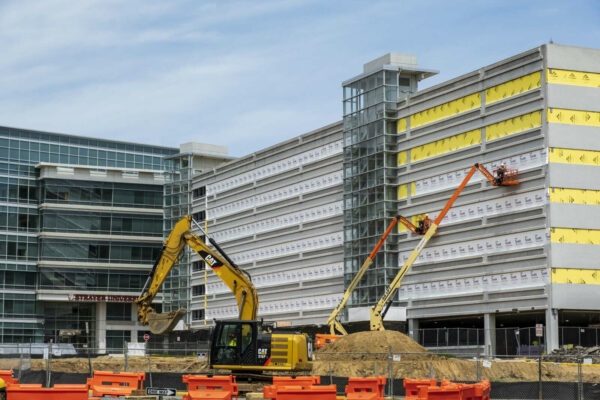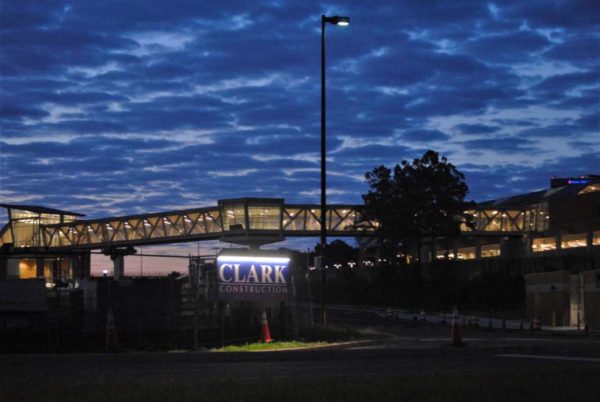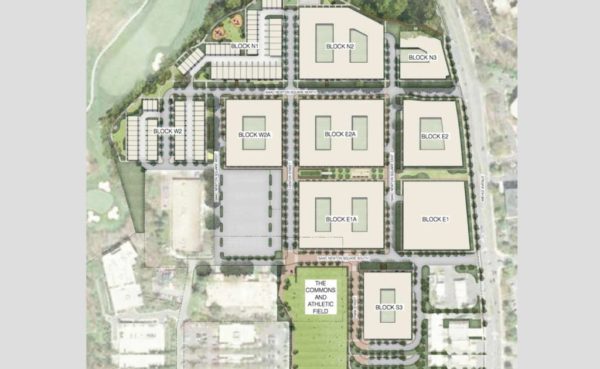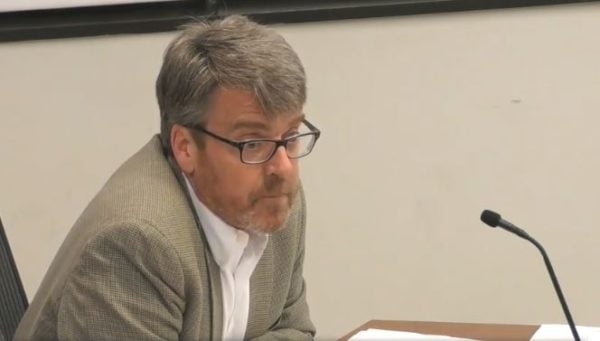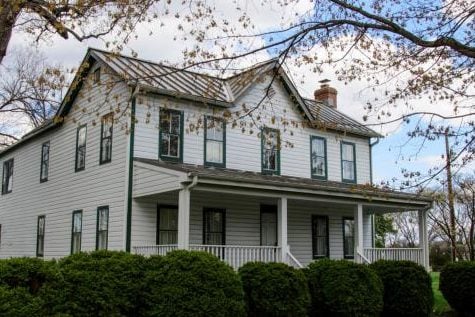
A nonprofit dedicated to helping people with disabilities has formally submitted plans to Fairfax County for a new program that will operate out of the Ellmore Farmhouse in Herndon’s Frying Pan Farm Park.
ServiceSource signed a 29-year lease for the property at 2739 West Ox Road on May 24 after the Fairfax County Board of Supervisors approved the nonprofit as the newest addition to the park authority’s Resident Curator Program earlier that month.
Now, county planners are reviewing a special exception application to permit an adult day support center at the farmhouse, so ServiceSource can establish a Long-Term Community Integration Services program with classes, training, and other services for adults with developmental disabilities.
“This application presents a unique opportunity to collocate a meaningful community service on County parkland and appropriately renovate a historic structure,” Scott Adams, an attorney representing ServiceSource, said in a statement of justification. “The synergy of collocating the proposed facility within Frying Pan Farm Park will serve as a peaceful setting with natural and recreational amenities for the program’s participants while also serving to further activate and support the park.”
Filed on Aug. 16, the application proposes allowing about 15 clients and six staff members at the Ellmore Farmhouse from 8 a.m. to 4:30 p.m. on Mondays through Fridays.
Intended to help integrate participants into the general community, the program will offer a variety of activities depending on the day, including:
- Community engagement activities, which could include volunteering in Frying Pan Farm Park’s visitor center and at Kidwell Farm
- Skill building and training opportunities
- Music, dance, and art classes
- Visits to local sites and small businesses
- Classes on computers, nutrition, and other life skills
- Reading groups
- Planning meetings with family members, ServiceSource employees, and Fairfax County-Falls Church Community Services Board staff
ServiceSource plans to collaborate with the Fairfax County Park Authority on additional amenities for Frying Pan Farm Park visitors, such as a “grab-and-go” cafe with snacks and drinks that would employ adults with disabilities.
The nonprofit also proposes selling candles, soap, tote bags, and other items handcrafted by people with disabilities through its self-employment program. All proceeds would go to the individuals who made the products.
As a resident curator, ServiceSource has committed to rehabilitating the two-story, 3,300 square-foot farmhouse by improving its accessibility and incorporating green building designs, while also preserving its historic character.
It is obligated to provide public access to the property, including at least one annual open house, and to deliver annual reports to the park authority, which owns the site, according to the lease, which won’t take effect until the special exception request and any other necessary permits are approved.
As part of the special exception application, ServiceSource has asked the county to waive a requirement that it provide an estimate for the maximum number of trips that will be generated by the facility, citing the limited number of participants in the proposed program.
It is also seeking waivers of any requirements to dedicate, construct, or widen existing roads and to provide a minor paved trail on the site that’s included in the county’s Comprehensive Trails Plan Map.
“The limited scope of the application does not warrant the construction of a new trail and users of the Adult Day Support Center will [be] dropped off and picked up by vehicle,” the statement of justification says. “There is an existing sidewalk that connects the Ellmore Farmhouse to the pedestrian crosswalk at West Ox Road and an existing trail along the southern portion of West Ox Road.”
Reston has seen a noticeable uptick in development over the past half-decade, just as local officials hoped with the arrival of Metro’s Silver Line, but between the multitude of projects and their often similar names, it’s understandable if residents have lost track of what buildings are going up where.
Fairfax County has come up with a solution, introducing an online map that shows the status and location of zoning projects in the Reston Transit Station Areas (TSAs).
Launched Wednesday (July 28), the Zoning Activity Data Hub is the second part of a larger Reston Data Visualization Project that the Fairfax County Department of Planning and Development has been working on to make it easier for community members to track development and infrastructure changes in the area.
“The project is the first of its kind for Fairfax County,” the county said in a news release. “It focuses on enhancing data transparency associated with Reston development and infrastructure improvements, including information about mobility, parks, and zoning activity.”
Planning department leaders and the Hunter Mill District supervisor’s office came up with the idea for the data visualization project when the county’s Comprehensive Plan for Reston was amended in February 2014 to establish the TSAs, according to DPD Urban Centers Section Chief Suzie Battista.
“Staff committed to increasing the public accessibility of planning data and trends,” Battista said by email. “This transparency allows citizens to better understand project timing and planning directions.”
The county released the first phase of the project in January with the launch of a Reston Transportation Data Hub, which has information about road projects, transit routes, and amenities for bicyclists and pedestrians.
The zoning hub features all proposed and approved zoning applications submitted to the county in the Wiehle-Reston East, Reston Town Center, and Herndon Metro station areas since February 2014.
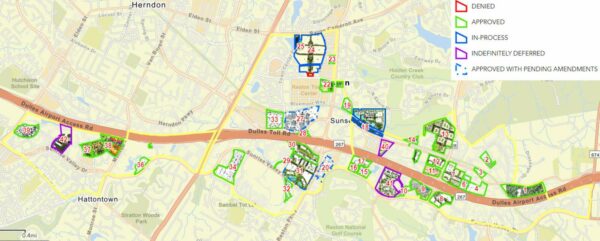
Each project is outlined in a different color depending on whether the application has been approved, denied, indefinitely deferred, or is in process. The arrow by the project name leads to links to images of the site and the application documents.
While the map is currently static, county planners told the Fairfax County Board of Supervisors in May that the data hubs will eventually be equipped to illustrate how Reston has changed over time.
Battista says the zoning activity hub will be updated “on an as-needed basis, such as when substantial zoning case are revised or new zoning applications are approved.”
The county says an Urban Parks Hub will be added to the data project “in the coming months.”
The proliferation of development around Reston comes despite repeated delays of the Silver Line Phase 2 project, which will extend Metro to Reston Town Center, Herndon, and into Loudoun County.
Hunter Mill District Supervisor Walter Alcorn calls the zoning data hub “a big step forward” in providing transparency.
“Reston has millions of square feet of development with approved zoning that has not yet been built,” Alcorn said in a statement. “…These online tools are a step toward visualizing what the transit station areas (TSA) of Reston will look like if all the development that has been approved is actually built.”
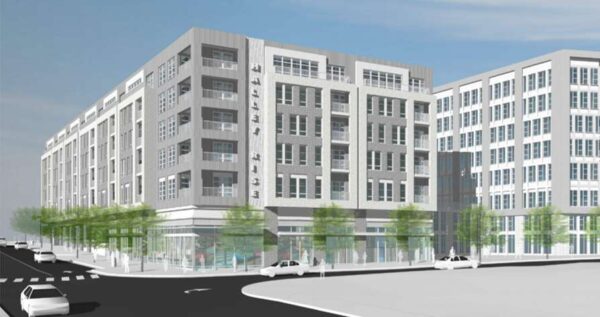
Halley Rise, the mixed-use development currently taking shape next to the impending Reston Town Center Metro station, could become even larger in scope.
As first reported by the Washington Business Journal, the real estate developer Akridge has submitted plans to Fairfax County that would introduce an additional 480 residential units and 9,250 square feet of ground-floor retail space to the 36-acre complex.
Located along Reston Parkway, the new development would join 1,500 residential units, 1.5 million square feet of office space, and 250,000 square feet of retail planned for Halley Rise by Brookfield Properties, which has been managing the $1.4 billion project.
According to a final development plan that Fairfax County’s planning staff accepted for consideration on April 14, Akridge’s parcel of Halley Rise would total 526,000 square feet with the vast majority of space devoted to residential uses.
The application states that the proposed “Block C” development would consist of two distinct buildings with a shared base and a nearly half-acre, elevated courtyard “with a variety of amenities.”
The larger eastern tower would wrap around an interior parking garage that would serve both residents and workers in an existing, adjacent office building. The development’s retail would be located on the ground floor of the smaller western tower.
Akridge says it plans to build condominiums in the western building “to provide opportunities for home ownership and appeal to a broader community,” but it still “reserves the right to operate this building as a rental apartment community,” citing “uncertainty” in the housing market.
In its conceptual designs, Akridge has proposed maximum heights of eight floors and 85 feet for both towers.
“Implementation of Block C will create residential opportunities and contribute to the necessary “critical mass” so that the mixed-use vision established by Halley Rise will be successful,” Wire Gill land use lawyer David Gill said in the application. “Our proposed implementation of that vision will not only enhance the Reston community overall but also support the larger street grid, existing office and larger community goals established by the governing approval.”
The Washington Business Journal reported that a subsidiary of Brookfield Properties still owns the 4.3-acre Block C site.
“Unfortunately I don’t have any information I can share with you at this point,” an Akridge spokesperson told Reston Now when asked why the developer wanted to get involved with the Halley Rise project.
Reston Now also contacted Brookfield for comment but did not receive a response by press time.
Brookfield broke ground on the first phase of Halley Rise in October 2019, an occasion that also saw the deployment of self-driving vehicles on the property. Anchored by Wegmans, the first phase will introduce 450,000 square feet of new office space, 640 residential units, 200,000 square feet of retail, and two parks.
Brookfield told Reston Now in October that it was still on track to open the first phase of residential units in early 2022, with the Wegmans grocery store following later that year. The first offices are scheduled to be delivered in mid-2023.
The overall project is not expected to be completed until 2026.
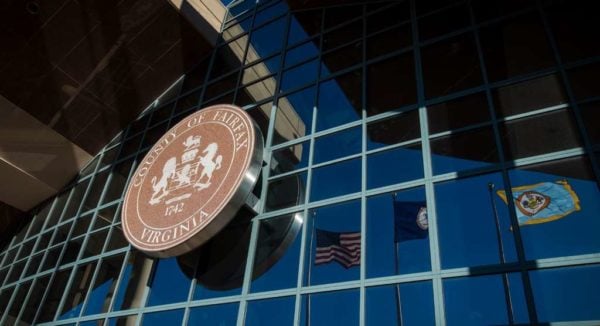
A decision on the previously deferred plan to bring a new telecommunication tower to Herndon High School’s football field has been delayed, along with other votes and hearings on Reston and Herndon developments.
The project was set to go before the Fairfax County Planning Commission last week on March 18.
The approval of signage for Commerce Park, a 260-unit multifamily building north of Sunrise Valley Drive and west of Commerce Park Drive, has also been delayed. A public hearing was planned for Wednesday, March 25. Another comprehensive sign plan by Reston Hospital Center was also slated for discussion on April 22.
Tweaks to change lot lines for Montessori Children Center (2745 Centreville Road) were set to go before the commission on April 2.
A plan to rezone roughly one acre of land from one residential unit to three residential units on the north side of Old Courthouse Road, just 300 feet east of Ervin Street, has also been delayed. The proposal by two residents was set for an April 29 public hearing.
County government officials have not yet indicated when the regular schedule for public meetings will resume. The county passed an emergency declaration last week.
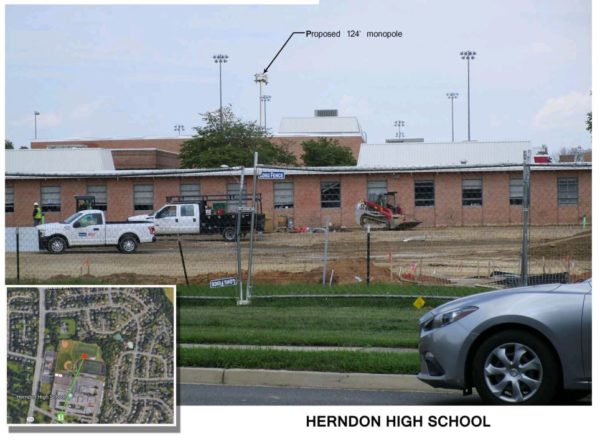
The Fairfax County Planning Commission is expected to vote on a proposal for a telecommunications facility on the grounds of Herndon High School today (Wednesday).
Milestone Tower Limited Partnership plans to build a 124-foot monopole and other equipment for the facility, which would be blocked off by an eight-food-tall chain link fence.
If approved, the facility would be located on the north side of the football field in between two existing stadium light poles. It’s expected to help Sprint improve coverage in the area.
In a staff report, the county noted that although the best option would be to move the facility to an existing structure or building that is tall enough to accommodate the facility, there is no option to do so in the area since it is largely home to single-family units.
“These sites provide few opportunities to minimize the impact on the surrounding residential neighborhoods. The large size of the Herndon High School parcel provides a large buffer from neighboring properties than other sites,” according to the report.
Staff also expect that the pole will blend into other lights that are already on the football field.
If approved tonight, the plan heads to the Fairfax County Board of Supervisors for a vote on March 10. The meeting begins at 7:30 p.m.
Photo via Sprint
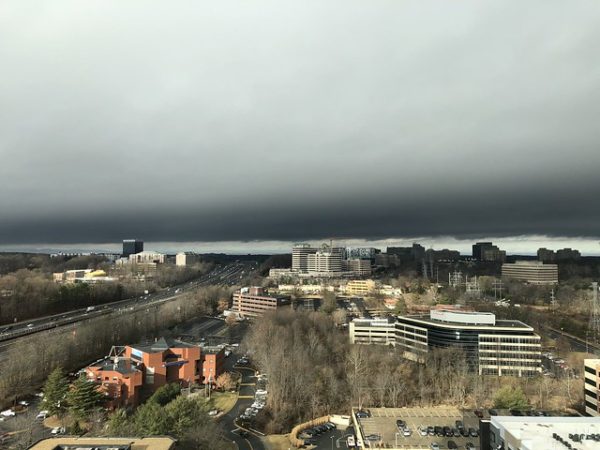
Since early 2014, a little over 10,000 residential units were approved in Reston. Just under 15 percent are considered affordable.
As the more residential development begins in Reston’s Transit Station Areas (TSAs) and Metro’s Silver Line ushers in more activity, nonprofit leaders and area community organizers wonder if Reston will hold true to Bob Simon’s vision for housing affordability.
“Reston was originally a very inclusive community. We have to ask ourselves, are we keeping that promise? Yes, we are a changing and growing community. But how can we achieve that balance between old and new?” said Kerrie Wilson, CEO of Cornerstones, a nonprofit organization that helps neighbors overcome economic hardship.
Achieving greater housing diversity is an aim of Reston’s comprehensive plan, which notes that most new affordable housing should be in multi-family units.
“Future development should ensure that a diversity of housing is available in the TSAs,” the plan states. “The residential component of mixed-use development should meet the needs of a variety of households such as families and seniors.”
But as Reston grows, will inclusive affordable housing keep up?
Tackling affordable housing is a regional problem and Hunter Mill District Supervisor Walter Alcorn (D) and other elected representatives have stated they expect to reexamine the county’s policies and procedures soon.
The county’s rejection of a proposal to redevelop Reston Town Center North — which would have delivered affordable housing units and redeveloped a homeless shelter and Reston Regional Library — was a significant setback for some local housing advocates. The need for affordable housing — particularly workforce units — is expected to grow as more workers take up jobs in new mixed-use centers.
From a policy perspective, the county has aggressively pursuing affordable housing in every development that requires it, according to county officials. A variety of techniques — including land-use policies, federal funds, and nonprofit and for-profit housing partnerships — are used to preserve housing units and create new ones.
Last year, a panel created by the county to study affordable housing outlined several strategies and recommendations to the county’s board for considerations. The 37-page report – which was incorporated into the county’s housing strategic plan — is part of an ongoing conversation on how to tackle housing affordability.
“Reston has traditionally been a welcoming and inclusive community and a leader in affordable housing,” said Tom Fleetwood, director of the county’s Department of Housing and Community Development. “Still, Reston, like the rest of Fairfax County, is a challenging housing market for low-to-moderate-income families because this is a very desirable place to live.”
Per goals outlined in planning documents, the county aims to reach a net 15,000 new affordable units at up to 60 percent of the average median income within the next 15 years.
“We have certainly made significant steps forward. But a significant amount of work remains,” Fleetwood said.
Since early 2014 through June 2019, the county approved 10,045 residential units, including a 2,010-unit proposal by Boston Properties and a 668-unit proposal by Comstock for Reston Station. Developers are set to pitch $18.1 million into the county’s housing trust fund once the first non-residential use permit is issued, according to county data released to Reston Now last year.
Private developers have delivered 453 workforce dwelling units for rent and 188 affordable dwelling units for rent in Herndon and Reston, according to county data.
“We are trying to work through every application to get affordable housing and we have gotten some affordable housing through every development,” said Bill Mayland, branch chief of the county’s zoning evaluation division.
He noted that it can be challenging to incorporate inclusive affordable housing units — whether workforce units or affordable dwelling units — in high-rise buildings, especially if condominium fees are charged in addition to rent.
Creativity is a common word used by experts as a solution for affordability challenges. Working outside of county land use and zoning provisions, some communities across the country have embraced more unconventional means to secure affordable units for rent and purchase in existing and new development.
At Cornerstones, the staff has successfully pursued a scattered-site model by working with developers to make specific units affordable. Recently, the nonprofit doubled its Reston housing stock by adding 48 units from the Apartments at North Point.
But in the town center and other rapidly growing areas, developers are not always open to experimentation beyond the county’s existing requirements. The hope is that the oncoming Silver Line train at Reston Town Center — which could begin operation by early 2021 — will boost developer’s confidence in the residential market and add more pressure to incorporate more affordable units as more people and jobs come to the area.
Others say that the county should consider dedicated one penny of the real estate tax to affordable housing projects.
Fleetwood says that he expects renewed discussions on housing affordability – including reaching more income levels – to continue in the coming weeks.
“My assessment is that the county’s policies have been productive and helpful. I think they are going to continue to evolve so that we have a policy that works over the long-term and for our developers. It is a continuing and evolving partnership.”
Editor’s note: Interviews were conducted in late 2019
Photo by Bako Glonto/Flickr
‘Overlooked’ Exhibit Ends This Week — “Join Greater Reston Arts Center (GRACE) this Thursday to hear Jean Badalamenti respond to the current exhibition Overlooked (closing August 31). DC-based Jean Badalamenti is a licensed social worker with more than 25 years of experience and DC Public Library’s first health and human services coordinator. She received a master’s degree in social work from Howard University and has spent her career advocating for people without homes or jobs, as well as those diagnosed with HIV/AIDS.” [Greater Reston Arts Center]
A ‘Jade’ Way of Looking at Your Neighborhood — “Explore your neighborhood in great detail w/ our new mapping application called Jade. It features 170+ layers to view, combine and analyze. It also includes, for the first time, current and historical aerial imagery.” [Fairfax County Government]
Assault Reported Near Florida Avenue — Kawser Ibrahim, 28, of Herndon was arrested for malicious wounding and assault on August 22. Police believe Ibrahim assaulted a man, who was taken to a local hospital for treatment. [Herndon Police Department]
Photo via vantagehill/Flickr
The Reston Planning & Zoning Committee voted to approve the the redevelopment of Isaac Newtown Square.
In a 12-1 vote, the committee motioned that the Fairfax County Planning Commission and the Fairfax County Board of Supervisors approve the plan for the urban neighborhood.
Peter Lawrence Companies is seeking to bring 3,200 residential units to the site, as well as up to 260,000 square feet of office, 66,000 square feet of retail, and a full-size athletic field.
The committee directed the applicant and the county to take environmental concerns voiced by the community into account as they develop the proposed athletic field.
“The committee asked that they make the field the best field possible, one that is environmentally sensitive, and a field that is open, useable, reliable and dependable in all seasons,” said chairman Rob Walker.
The committee, which meets on a monthly basis, also recommended that the commission and the board approve plans for block D of the Halley Rise Development.
Decisions on Block 6 of that development and Reston Station Promenade
Photo via Andrew Painter
Excessive Heat Warning in Effect Today — The heat warning is in effect from 11 a.m. to 9 p.m. this evening. Heat index values will climb near 110 degrees today. An excessive heat watch is in effect tomorrow and Sunday as well. [Fairfax Alerts]
Review Changes to Fairfax County’s Zoning Laws — On Monday, June 22, residents can drop in on an open house in Fairfax to learn about recently proposed changes, including new uses for agritourism and limiting temperatures for LED lights. Attendees can also learn about recently adopted changes to community gardens, short-term rentals, and signs. [Fairfax County Government]
Despite Issues, Silver Line Extension On Track — “Switches in the new Silver Line rail yard do not line up with the tracks they are supposed to connect to, systems to detect train locations in the yard have failed, and there are still problems with the rocks that support the tracks, a new report to the Metropolitan Washington Airports Authority Board said.” [WTOP]
Photo via vantagehill/Flickr
The Fairfax County Planning Commission struck down a plan to bring a 13-story building with 58 residential units near Reston Regional Library.
During a meeting yesterday (Wednesday) night, Commissioners noted that the plan by NS Reston would exceed the density and guidelines allowed for the area, which is known in planning jargon as “Part 5.”
In a report, county staff noted the property has been “marketed as a park for over 20 years.” Staff also stated that the plan was not in conformance with Reston’s comprehensive plan.
Hunter Mill District Planning Commissioner John Carter said that the commission cannot simply approve plans that do not conform with land use and density requirements. If the parcel is to be developed, it should be consolidated with the Reston Regional Library parcel to the north.
“I can’t imagine that we just disregard the comprehensive plan,” Carter said.
NS Reston is seeking to build a 180-foot residential structure on the site with a partially underground parking garage. An urban park will include public art, a wall bench and a recreational lawn.
John Hart, the commission’s vice chairman, stressed that it is within the purview of the commission to assert that a development area is too small and that maintaining the location as open space is too important to allow development at the intensity proposed.
John McGranahan Jr., the applicant’s representative, said that the development history on the site was complicated.
Despite this, McGranahan said changes between recent approvals of the comprehensive plan indicate that the proposal could be allowed.
He also disputed the way the county calculated whether or not Part 5 would be pushed beyond its development capacity if NS Reston’s plan was approved.
The project is located on the north side of New Dominion Parkway roughly 300 feet west off of Fountain Drive.
The developer did not indicate if they will appeal the decision.
Renderings via NS Reston/Fairfax County Government
Updated at 5:00 p.m. — Corrects the spelling of Laurie Dodd’s name and the time of the Planning Commission meeting on Jan. 23.
Reston Association’s Board of Directors unanimously voted to continue its opposition to a proposed zoning amendment, which would increase Reston’s population density, at last night’s meeting.
The proposal would increase the maximum allowed population per acre in the Planned Residential Community (PRC) district — Reston’s primary zoning district — from 13 persons up to 15.
After an executive session to consult with the land use counsel, Vice President Sridhar Ganesan said that the current density at 12.46 people per acre is a “very inaccurate population estimate.”
“A lot of slack is built into the current density,” Ganesan said. “I believe the director of the Planning and Zoning Commission told us –some of the members on the board — they are trying to recalculate the population estimate in Reston, and they don’t have an accurate estimate just yet.”
Given the wiggle room in the current density and the outrage from many community members, Ganesan said the PRC density level should not increase.
Several community groups, including the Coalition for a Planned Reston and Reston 2020, are fighting the move, arguing that the proposed amendment is rushed through and under-explained.
County planning officials have argued that the change is needed to put into action Reston’s Master Plan, which allows for future growth over the next 40 years.
President Andy Sigle said that the RA is still working through “reams” of data and information in support of the zoning proposal from a series of emails on Dec. 11 from Fairfax County.
“We have a concern that the wrong number on this PRC density will overwhelm the infrastructure prescribed in the Reston Master Plan, so it’s important that we get the right number,” Sigle said at the meeting.
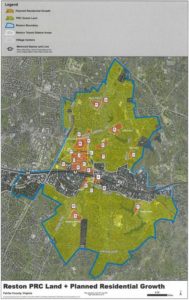 The board also approved setting up a work session for RA’s board prior to the Planning Commission’s Jan. 10 workshop on the amendment.
The board also approved setting up a work session for RA’s board prior to the Planning Commission’s Jan. 10 workshop on the amendment.
Fairfax County’s Board of Supervisors clashed over community input on the proposed zoning changes at their Dec. 4 meeting, before authorizing public hearings on the proposal.
Hudgins said at the Dec. 4 meeting that locals have had plenty of opportunities to get the desired information. “Yes, there are some questions that people have,” Hudgins said. “Those questions have been answered before or are not relevant to this.”
Meanwhile, Dranesville District Supervisor John Foust and Braddock District Supervisor John Cook argued for more community input.
Residents expressed frustration and disapproval to RA’s board last night (Dec. 13), pointing to a lack of community input to the county’s board and insufficient infrastructure to support increased density in Reston.
Laurie Dodd, a resident for the last 23 years, criticized Hunter Mill District Supervisor Cathy Hudgins for asking to schedule hearings on the zoning proposal without following through on promised community engagement.
“It is disturbing to me to see other supervisors in Fairfax County speak up about the right of residents to be heard more than our own supervisors had done,” Dodd said.
The Planning Commission is scheduled to hold a public hearing about the zoning proposal at 7 p.m. on Jan. 23, followed by the Board of Supervisors’ public hearing at 4:30 p.m. on March 5.
The Planning Commission must say “yea” or “nay” to the proposal by March 15, according to county rules.
Secretary John Mooney urged Restonians to stay informed and engaged. “Please attend the county meetings,” he said.
Photo via Reston Association/YouTube
This story has been updated
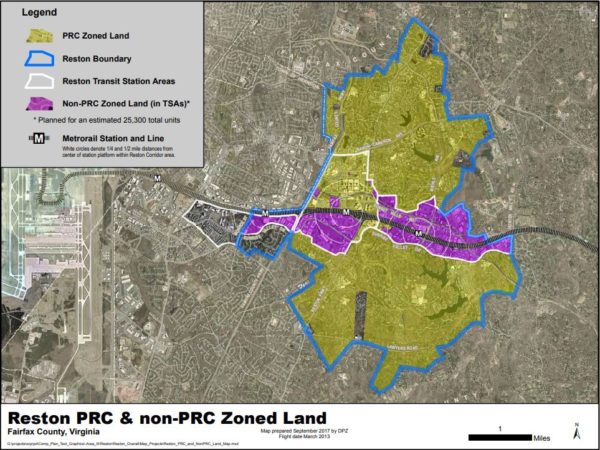
As Reston is projected to continue growing at a dramatic pace, Fairfax County is moving forward with a proposed zoning amendment to allow for greater density. But a group of Reston citizens are protesting the move, saying the proposed amendment is rushed through and under-explained.
The zoning amendment would increase the maximum population per acre in the Planned Residential Community (PRC) district from 13 persons to 15. Dwelling units per acre would increase from 50 units to 70 near Metro stations.
The Board of Supervisors is anticipated to authorize public hearings on the zoning changes at its upcoming Tuesday (Dec. 4) meeting. Public comment will not be heard at the meeting.
A group of citizens calling themselves the Coalition for a Planned Reston wrote a letter to Supervisor Cathy Hudgins saying that approval of the zoning amendment would be premature.
“The Coalition for a Planned Reston (CPR) is deeply concerned and dismayed by the announcement that you have requested County staff to move forward with the proposed PRC Zoning Ordinance Amendment,” the CPR wrote in the letter. “We strongly urge you to withdraw your request immediately and to complete the community dialogue to which you committed.”
The letter included a list of 23 areas where the groups say Fairfax County officials have supplied inadequate information. Among the criticisms of the zoning amendment are exemptions given to developers with proposals that do not conform with the Reston Master Plan.
Some of the topics of the letter involve the minutiae of zoning amendments but others — like what the CPR calls a lack of clarity over the expected number of students the added density would have on the school systems — could shape Reston for years to come.
This isn’t the first letter from the CPR over the issue. The group had previously sent a letter on Aug. 1 urging Hudgins to suspend action on the amendment. The Reston Association has also expressed concern about the impact of the zoning amendment.
Photo via Fairfax County
Fairfax County is expected to move forward with proposed zoning changes for Reston that would increase the population density.
After 17 months of public engagement, the county’s Board of Supervisors is anticipated to authorize public hearings on the zoning changes for early next year at its Dec. 4 meeting, the county announced Monday (Nov. 19). The meeting will not be an opportunity for public input, the statement said.
The proposal would increase the maximum allowed population per acre in the Planned Residential Community (PRC) district — Reston’s primary zoning district — from 13 persons up to 15. The current density is roughly 12.46 people per acre.
“This 13-persons per acre limit has remained unchanged for several decades and does not accommodate the future residential growth anticipated in the Reston PRC near the future Silver Line Metrorail stations,” the statement said.
The proposal would also up the limit of 50 dwelling units per acre to 70 in the transit station areas planned for mixed-use development. This would mainly affect the Reston Town Center Transit Station Area, according to the statement.
County officials began small workgroup sessions hosted by the Coalition for a Planned Reston, a grassroots organization and Reston Association in July to discuss the controversial plan.
County planning officials have argued that the Reston PRC zoning change is needed to put into action Reston’s Master Plan, which allows for future growth over the next 40 years, especially around the Silver Line Metrorail stations.
Last September, Reston 20/20, Reclaim Reston and the Reston Citizens Association encouraged Restonians to fight the County’s proposal, which then had the bump on the people per acre in the PRC District from 13 to 16.
Coalition for a Planned Reston sent a letter Aug. 1 to Hunter Mill District Supervisor Cathy Hudgins to urge her to continue suspending further action on the zoning amendment while discussions were ongoing between the Reston community and Fairfax County staff.
Reston Association sent two letters last year to Hudgins. The first one expressed opposition to the amendment as currently proposed, and the second letter included a list of actions that should be undertaken before the amendment is considered any further by the county.
“Many believe that such increases would create an unsustainable burden on Reston’s infrastructure,” the Reston Association said in an April 11 statement. “Simply, we want to ensure adequate infrastructure to account for the increased growth, including, but not limited to, adequate schools, roads, parks, athletic fields, and natural areas, while protecting the Reston vision.”
Photo via Fairfax County
At the last workgroup meeting on a controversial zoning amendment, county officials stressed that population density increases proposed in Reston’s comprehensive plan are broad targets that will be gradually implemented over the next 30 years.
The meeting, held Tuesday night, was the last in a series of discussions on the county’s proposal to increase Reston’s population density from 13 to 16 people per acre in the community’s Planned Residential Community district.
Representatives from the Coalition for a Planned Reston and Reston Association said that while they were not opposed to development, the cumulative impact of increased development without the infrastructure to manage it was a major concern.
Tammi Petrine, co-chair of Reston 2020, said increasing the density cap only invites more developers to push harder for development — a trend that she said is already clearly evident in the streak of major mixed-use projects approved by the Fairfax County Board of Supervisors.
Fred Selden, director of the Fairfax County’s Department of Planning and Zoning, said the community has multiple opportunities between when a development plan is proposed and passed to voice their concerns, suggest alternatives and raise critical issues.
“The community, quite frankly, has to give its judgment,” Selden said.
But others felt that concerns raised by community members have little sway in the overall planning process.
Selden said his office would be open to discussing possible changes to Reston’s comprehensive plan if pressing needs arose. In Tysons, the plan was updated seven years after its passage when the planned grid of streets did not align with what was actually being built.
But Selden also noted that major changes to planned land use intensities are rarely incorporated within five years of a plan’s passage. Late last year, CPR and RA suggested altering Reston’s master plan to make specific changes. He repeatedly stressed that Reston’s plan envisions possible future growth, which may or may not be realized given economic and market constraints.
Redevelopment of Reston’s village centers was also a hot topic during Tuesday’s discussion. Selden stressed that the plan already leaves the door open for high-density redevelopment potential — an element of the plan that was supported by some residents during earlier planning discussions.
“We could have said that there’s no redevelopment potential in the village centers,” Selden said. “But that’s not what we heard from the community.”
Others like John Mooney, a member on RA’s Board of Directors, said planning processes focus on the impacts of development in Transit Station Areas without considering the impact on development in all of Reston.
He said traffic studies have not considered the impact of traffic in Transit Station Areas on the rest of Reston.
“I see no evidence, although I’m awaiting further information,” Mooney said.
Photo via YouTube
(This story was updated on Wednesday at 6:27 a.m. to clarify a quote by John Mooney.)
Piqued by a plan to increase Reston’s population density in select areas, residents pressed county officials to identify specific athletic field options and open space commitments at a work session this week.
During the meeting, the 10-member panel, which included representatives from Reston Association, the Coalition for a Planned Reston and three county officials, discussed how the county plans to ensure future development in and around Reston’s future urban core will incorporate athletic fields and open, community spaces.
While citizen members lauded the county’s efforts to work with developers, some noted that county plans lacked specific assurances on how and when broad commitments would come to reality.
The meeting is the second in a series of work sessions on topics of concern raised by local residents and community organizations as the county mulls a plan to increase Reston’s population density in its Planned Residential Community district planned from 13 to 16 people per acre.
County officials said planning processes are in place to ensure athletic fields and open space requirements are met. Generally, once major developments are built and occupied overtime and needs are generated through pressure created by development, specific requirements for athletic fields will kick in.
However, they remained mum about the location of future athletic fields, noting that negotiations with developers are ongoing and that, once property owners learn a land is being considered for an athletic field, the property’s price is often hiked considerably.
Asked by a member to point to possible locations for fields, Fred Selden, the director of the county’s planning and zoning department, said, “Right now, we can’t.”
In Reston, one athletic field is required for each Transit Station Area and nine are required outside the TSA areas. Upgrades to existing fields may also be considered. Thus far, the developers have committed $10.3 million to go toward athletic fields in the greater Reston area.
So far, funds have remained untouched.
Others called on county officials to aggressively push developers of major mixed-use proposals — like the 36-acre Reston Crescent project — to identify specific plans for athletic fields.
“Those are the examples where the community feels we were being passed by in some way, shape or form,” said Larry Butler, RA’s Acting CEO.
Dennis Hays, president of the Reston Citizens Association, said he was concerned no immediate plans were on the table.
“Everything that we keep talking about is down the road,” Hays, who led the meeting, said.
Andrea Dorlester, manager of the county’s park planning branch, said the county has been aggressive in pushing developers to identify plans for nearly two years. When working with Brookfield, the developer of the Reston Crescent, county staff said they rejected a proposal by the developer to include a small athletic field suitable for children up to the age of eight.
Now, the plan, which is barreling towards final approval later this month, includes a proposal for the developer to purchase seven acres outside the property and convey it to the Fairfax County Park Authority.
Part of the challenge in securing athletic fields is that Reston’s master plan does not mandate the creation of athletic fields in Reston’s planned downtown core, officials said.
As additional development waits in the pipeline, others worry that challenge may already be difficult to overcome. One question, they say, hovers: As land becomes limited in the area, where will the future athletic fields go?
File photo


